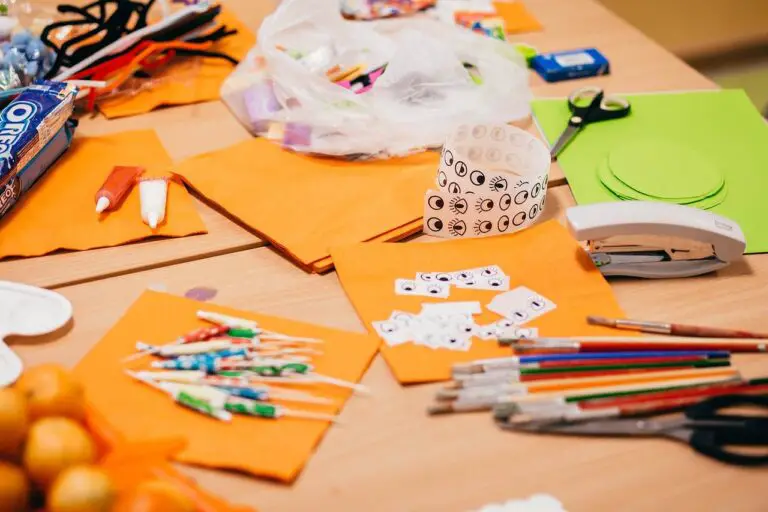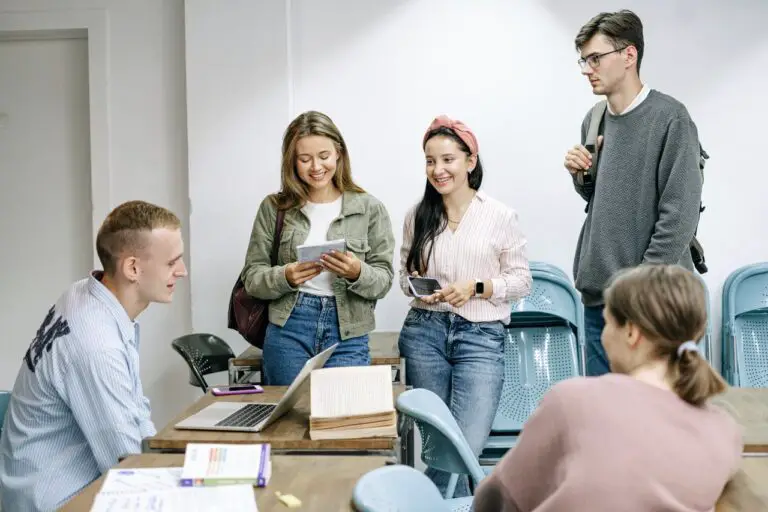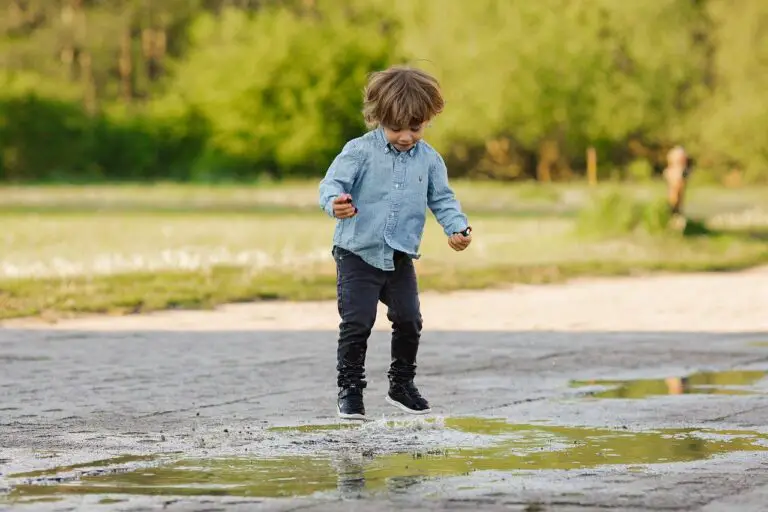Teaching vocab can be a drag. Word lists, weekly tests, repetitive flashcards… these old-fashioned methods are so boring!
As EFL/ESL teachers, we can do a lot better. In fact, many already do, with their students loving the games and activities they do in class, and appreciating how many words they’ve already added to their mental storage.

The challenge with making vocab learning fun is having enough ideas to keep lessons fresh and varied. You can’t play the same game in every class for a whole year!
Fortunately, this article has plenty of ideas and activities to keep you going long into the future. Although the title says “9 Ways”, really each of them has plenty of scope for variation and modification so you can use them again and again without getting stale.
Everything on this list has been tried and tested by me. I’ve been an EFL teacher since 2015, during which time I’ve learned and created hundreds of vocabulary activities and games. Some of them were pretty bad. But others were amazing! This article is a look at some of the best ones I’ve ever used.
Before we get to it, we need to go over a little theory (bear with me, it’s worth reading).
There are three phases of vocab learning:
- Acquisition. When students learn new words for the first time. This can be when they appear naturally in the lesson (organic acquisition), or when you present words to students using elicitation techniques.
- Memorisation. Students take new vocabulary and embed it in their mind. It involves spending time with the word and creating lots of neural pathways to it.
- Retention. Long-term vocab recall is achieved through repeated practice (ideally spaced out over time). The retention phase is about maintaining the memory links before they decay.
The ideas in this article cover all three phases.
If you want to understand the process of learning vocabulary in full, head over to my complete guide: Best Method to Improve EFL/ESL Students’ Vocabulary: 9 Steps. It runs through all three phases with guidance and activities for everything.
Alright, now let’s get to the list!
- Word Hunt
- Packed Pictures
- Video Scramble
- Elicitation games
- Gestures and sounds
- Arts and crafts
- Collaborative storytelling
- High energy games
- Spaced repetition (Anki)
1. Word Hunt
We start with the acquisition phase of learning vocabulary, and our first elicitation activity. We need to find words that are valuable to our students. That means they’re relevant, useful and interesting.
All you need for the Word Hunt is a camera (your phone is fine).

The activity is quite simple: students get up and walk around the classroom/building/playground/park and look at the things there. If they know the word for something, they can shout it out. If they don’t, they should identify it and get your attention. You then take a photo of it.
With individuals or small groups, you can do this all together. With larger groups that you trust, they can split off and take photos with their own cameras.
If you have a big group of less mature students, send them all off to look for an object they don’t know the name of and stand next to it. Then you can shout “stop” and go around taking photos of everything. You’ll get plenty of repeats, so encourage them to look for less common items.
The great thing about this activity is you can do it in lots of different places. The classroom is a good place to start, but what about going out to the park, or on the street? Can you do it on a school trip? Of course, think about safety when doing this, especially with children.
You can even get students to do it at home. Set them homework to take 10 photos of things they find during the week that they don’t know the word for. You can target a topic, for example food, by getting them to take photos of the things they eat that week.
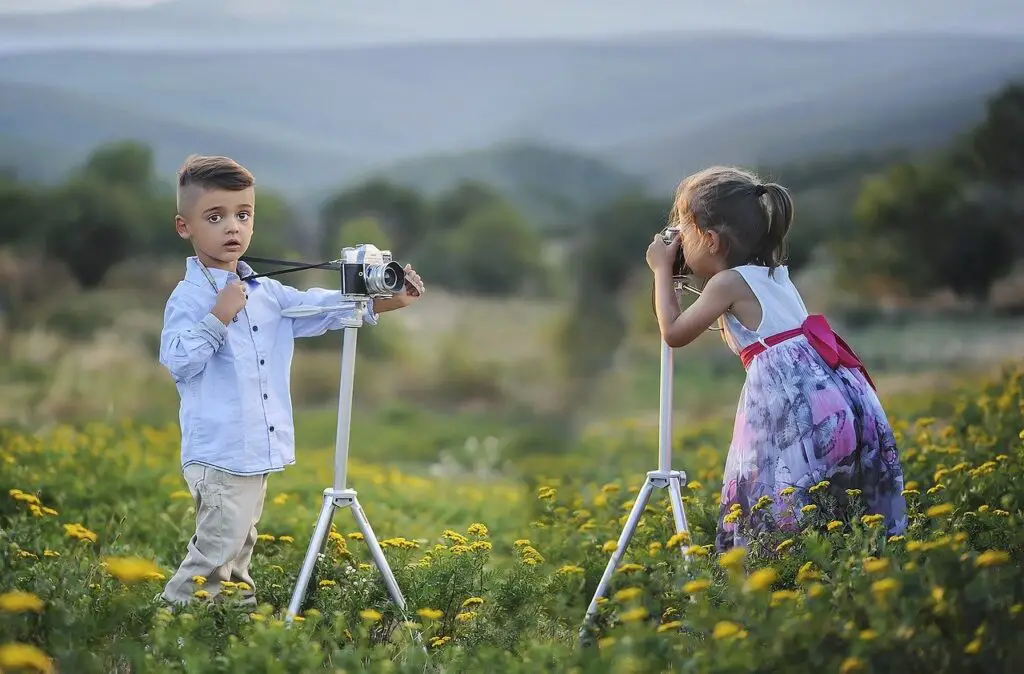
Once you’ve got lots of photos, there are many things you can do with them. Make them into flash cards, create a slideshow or photo album, and play games. Later in this article, I’ll show you how I use photos with Anki for next-level learning.
Images are powerful. And with Word Hunt, you get lots of valuable ones.
To learn more about the power of images in teaching vocabulary, read my in-depth article on the subject: How to Use Images for Deep Vocab Memorisation in EFL/ESL.
A couple of words of warning. This is not a great activity if you have to teach students a specific list of vocabulary. Also, you may want to take out some of the photos if the words are too obscure or difficult (radiator is fine, but non-return valve is a bit much for most students!)
2. Packed pictures
Packed pictures is a slightly more controlled but no less engaging elicitation than Word Hunt.
Have you ever done one of those crazy jigsaws that are packed full of things? Or played Where’s Wally (or Where’s Waldo)? Those kind of pictures are brilliant elicitation tools.
Do a Google search for “Jan Van Haasteren puzzles” and you’ll find plenty. You can download the pictures, but be sure to get the larger images (at least 1000px on the longest side) else they’ll be difficult to see.
Looking right now, I can find scenes of a toy shop, a bakery, an art museum, a birthday party and a farm. There are dozens more.
To best use these, I recommend getting some A4 dry-erase pockets, printing off the pictures and putting them inside so students can circle things they find.
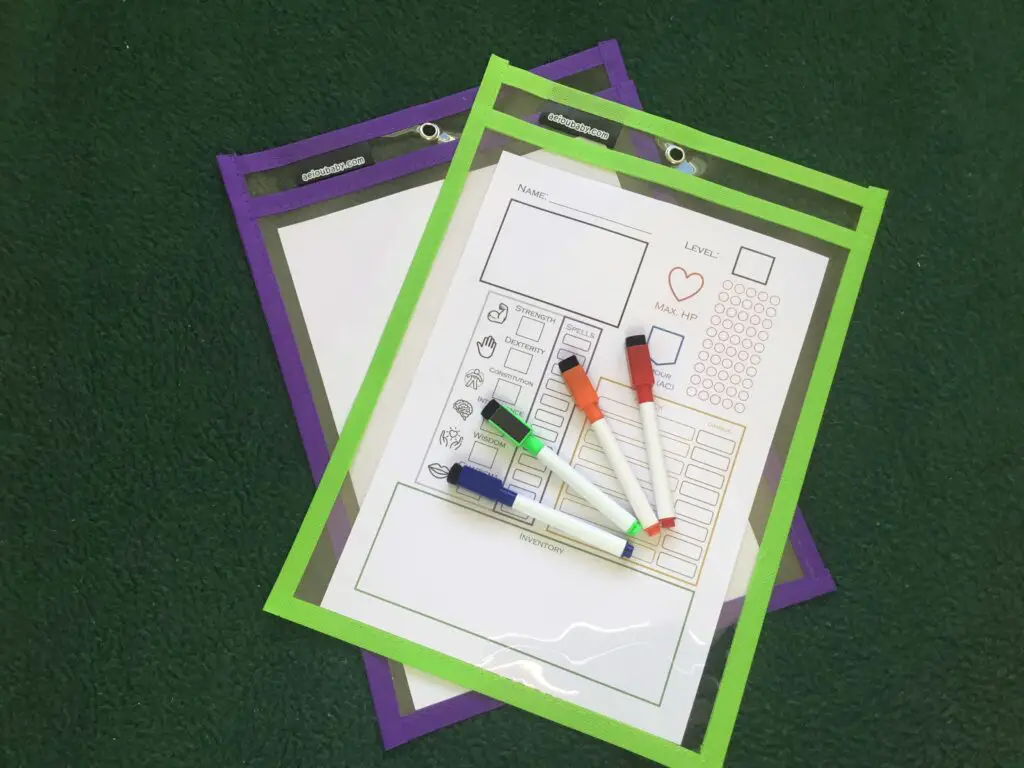
Alternatively, display it on the board with a projector so the whole class can see.
Eliciting vocabulary is easy with such a great resource. Have students shout out what they see and write down the words. Then get them to find things they don’t know the words for, and write them down separately.
You can ask them to search for certain items, find three different things of a certain colour, or even have them choose something hidden and challenge the rest of the class to find it.
All the while, record new vocabulary. And, if you can, use a photo editor to cut out the object from the main picture so you have recognisable images to use as flashcards and materials for games in the future.
What I love about Packed Pictures is you can choose a picture related to the topic you’re studying. There are ones for almost every topic.
3. Video Scramble
This one is simple. Show students a video, and get them to write down as many words from it as possible.

Despite the simplicity, it’s very flexible. You can adapt and adjust the Video Scramble to the needs of your class, varying difficulty and content.
- With less confident students, use subtitles and don’t expect them to write down a lot. Use slower paced videos.
- Intermediates may feel comfortable without subtitles and can keep up with a higher pace. Have them watch the video a couple of times, first writing down words they know, and second, words they’re unfamiliar with.
- For advanced students, get them to write down anything they haven’t heard before, and use real, natural English speakers with different accents.
Video choice is key to success. You don’t want too many unknown words, otherwise it’ll get overwhelming. That’s why I’d avoid most music videos with beginners and intermediates. You also want to watch the video beforehand to identify some appropriate target vocab.
While doing the activity, you can change things on the fly. If students are really struggling to keep up, hit the pause button now and then to give them time to write. Alternatively, if they’re very confident, make it a challenge to see who can write down the most words.
4. Elicitation games
There are so many ways you can elicit vocabulary beyond the three already mentioned.
A shout-out brainstorm on the board can be pretty fun – students shout out words and the teacher has to try to write them all down quickly.
Or, pick a topic, give students some books or online information, and have them race to find new words related to the topic.
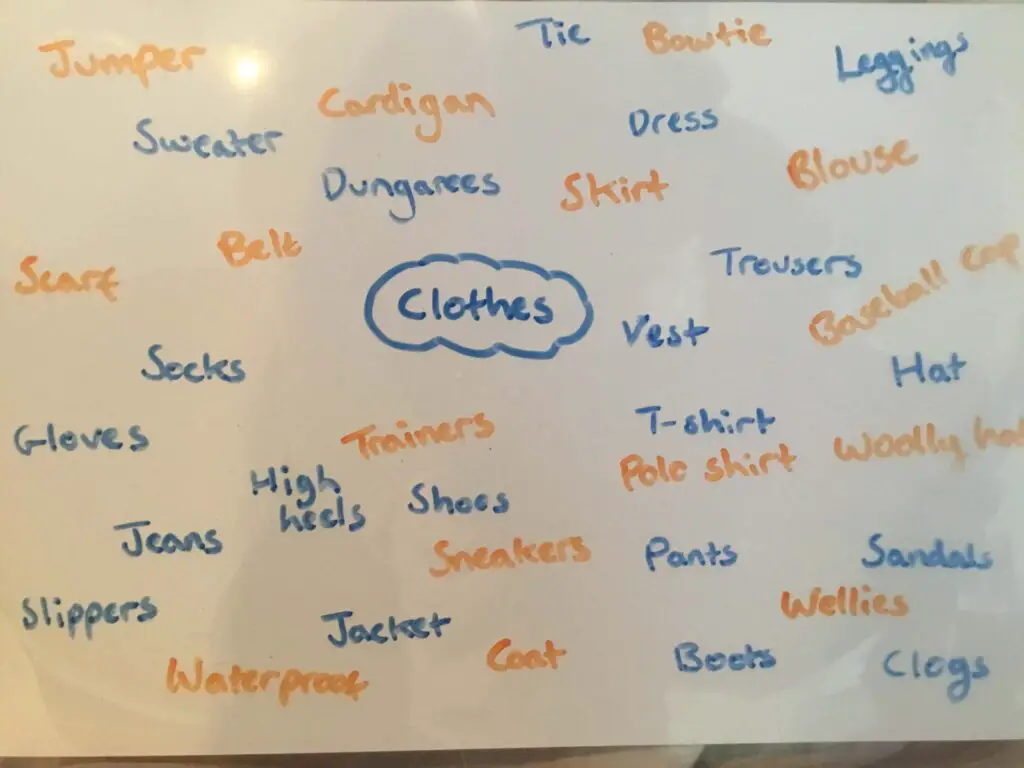
Dictionaries are good resources, too. Challenge students to find five-letter words that start with “J”, or any words that end in “ful”.
Be creative. Come up with mini-games of your own. Anything that gets students enjoying finding new, useful words is a winner.
Interested in how to apply elicitation techniques effectively? Check out my guide here: How to Elicit Vocabulary in EFL/ESL: 7 Effective Activities
5. Use gestures and sounds
Now we’ve moved into the second phase of vocab learning – memorisation. In this phase, we want students to create lots of neural pathways to the word, and that means diversifying and strengthening connections.
Gestures and sounds are two powerful methods for doing just that.
Those familiar with Total Physical Response will already know the value of gestures in creating mental links. Coupling physical movement to an idea or concept (in this case a word) embeds it firmly in the mind.
Let’s say you’re learning the word “headphones”. Think of a gesture. Did you cup your hands over your ears and bob your head as if listening to music?
That’s an easy one. What about strawberry? A gentle bite of something held between the fingers, perhaps?
You can do this for all sorts of words. Children, especially, love this kind of thing. You can get them up on their feet, moving their body, really acting it all out, while strengthening their memories by repeating the word out loud.
Now try making a gesture for “brown”.
Er… no, I couldn’t think of one either. The downside of using gestures is you can’t apply them to every word. Concrete nouns and active verbs are best. Abstract nouns and verbs, as well as many adjectives are tricky.
If you’re teaching a new set of vocabulary, go through each word first and see if it’s easy to think of a gesture that makes sense. Avoid anything that has more than one or two motions. If students struggle to remember how to do the weird gesture you invented, then it defeats the whole point.
For a more detailed look at using gestures for vocab learning, read my article: How to Use Gestures to Embed Vocab in EFL/ESL. You can find two brilliant gesture-based games there, too!
Sounds work in a similar way to gestures. But instead of activating the motor part of the brain, they get the audio neurons firing. Similarly, they won’t work for every word, but when used correctly, they’re fantastic.
A simple example would be with the word “snake”. Making a hissing noise and saying ssssssnake connects the meaning of the word to the sound.
Getting more advanced, you can add extra noises, emotions and silly voices. Here are some more examples.
- After saying “excited”, shout “Yippee!”
- Say the word “rollercoaster” as if you’re riding one.
- Boom the word “HAMMER” like Thor.
You can have a lot of fun with these. For more ideas, check out my guide: Sounds and Audio Hooks for Lasting Memorisation in EFL/ESL.
Now, let’s take things up a level. Can you think of a gesture for the three words above to make a combo with the sound? Better yet, can your students think of one themselves?
6. Arts and crafts
When used right, arts and crafts can be an excellent supplement to English classes.
During the memorisation phase, we want students to spend a lot of time with the words, building and strengthening those links in the brain. Designing and creating something which features the target words accomplishes this.
However, just doing any old arts and crafts activity isn’t enough. Sometimes we can get carried away with the practicalities and creative side of things and forget about what we’re actually focusing on. I know, I’m guilty of it myself.
Choice of activity matters. We should choose the activity based on how well it supports vocab learning, not on how pretty it might look at the end.
My favourite activity for memorisation is making Vocab Rods.
These are quite easy for children, and provide a tool for future practice that you can put around the classroom, rather than being put in a box never to be seen again.
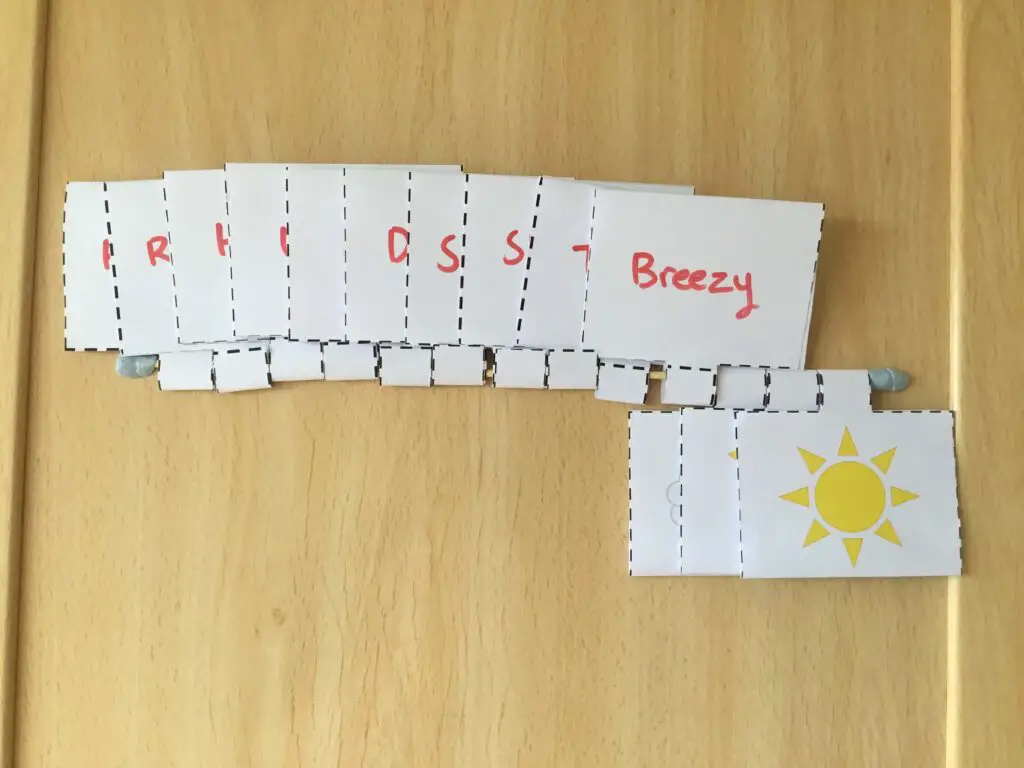
The vocab rod is a stick of dowel with paper slips attached. On one side of each slip there’s a picture (photo from a Word Hunt, maybe?) and on the other side is the word.
When created, you can stick the rods to a wall and flip the slips to practice.
If you get each student to make their rods with different words, you can stick them all up and have hundreds of words to practice. Then maybe challenge students to get around the class and answer them all as quick as possible!
To see the full instructions for making the Vocab Rods, head to my article How to Use Arts and Crafts in EFL/ESL + 7 easy activities where you can find lots of other cool ideas for the EFL/ESL classroom.
7. Collaborative stories and dramatizations
Something often overlooked when learning vocabulary is context. Learning individual words is fine, but using them in a practical situation is another level of fluency. What’s more, applying the word to a sentence further strengthens its memorisation.
Collaborative stories and dramatizations are fun opportunities to use new words in context. Let’s look at them each in turn.
Collaborative stories are often silly and engage all students in the class. All you need is a big list of words visible to everyone. Ideally, the words shouldn’t be too closely related. If they’re all vegetables, the story isn’t going to be as interesting as if there were some vegetables, some action verbs and some adjectives.
Each student, in turn, says a sentence containing one or two of the words as part of a story. For example:
Student 1: Yesterday, me and my father went to the market to buy some cucumbers to eat at dinner.
Student 2: When we got there, all the cucumbers were very dirty.
Student 3: My father used the broccoli to clean the cucumbers, but it didn’t work.
Student 4: The man at the market was angry and said “Why did you make my broccoli disgusting?”
As you can imagine, there’ll be plenty of laughter when students realise they can be creative with the words.
A few tips to keep things going smoothly:
- Encourage students to keep their sentences relatively short and ban using more than two words from the list, otherwise they might try to make the longest sentence ever with all the words.
- Join in yourself. You may want to start things off, so the first student doesn’t have the pressure of thinking up the whole story concept. Also, taking part allows you to steer the story if necessary.
- Choose words you think will work together. In the example, I combined vegetables with adjectives related to taste and condition to give plenty of options.
- With large classes, split them into groups of 5-8 so students don’t get bored.
Dramatizations are a slightly looser and potentially wilder form of collaborative storytelling.
Groups of 2-5 are best. Give each group a list of words (around 15). Allow them some time to read the words and create a drama which uses all of them. Then they act it out!
Students aren’t allowed to use the words in a list, like if they did a market scene and one student said “I would like to buy some cucumbers, broccoli, aubergine, celery and lettuce.” They should also use the words in a meaningful context rather than just randomly inserting them into sentences.
To make this a little more challenging, give each group a set of secret words different to the others. When students act out the dramatization, their peers can try to figure out what the words were.
8. High-energy vocab games
This entry in the list can fit into the memorisation or retention phase. You can use high-energy vocab games to practice newly learned words, but you can also do them weeks or months after as a quick recap to keep those neural pathways active.
Some games can be used as warmers, like Hot Potato, Chain Comparisons and Pass the Bomb.
Others are a little longer and require a bit more setup, like Swat the Word and Board Races.
None of them should last too long, though, else your students will get tired and unruly. But used at the right time, they’re very effective.
I don’t want to squeeze the rules and tips for a whole bunch of games into this article, so check out how to play 9 of my favourites, here: 9 High Energy EFL/ESL Games for Boosting Vocabulary
9. Spaced repetition (Anki)
Spaced repetition is the repeated practice at intervals which vary according to success of the practice. It’s the single best method for ensuring retention of vocabulary in the long term.
Here’s a brief overview of how it works:
I’m learning two words: “smash” and “assist”. I first learn them at the same time, with some great memorisation techniques – photos, gestures and sounds.
The next day, I practice them. I can’t remember smash, but I can remember assist. The following day, I’m going to practice smash again (and every day after until I get it right). The next time I practice assist, though, will be in 4 days. And if I get it right then, it’ll be 10 days, then 3 weeks, then 2 months, and so on.
The spaces between each practice get longer and longer until they’re so long that the word is essentially fixed in my mind. If I get it wrong at any point, though, I start from scratch.
In this way, I spend more time practicing difficult words than easy ones. That’s efficient. And over the long term, I can retain lots of vocabulary with just 5 minutes practice a day.
Now, I could probably keep track of the days when learning two words. But what about ten, or a hundred, or a thousand? That’s where Anki comes in.

Anki is a spaced-repetition app that automates everything for you. You don’t have to think about when to practice each word, the algorithm handles that. You just use the app each day (or each week) and do the practice.
On the app, you make flashcards. You can add photos, audio and notes to each flashcard – that means you can store the photos, gestures and sounds you make earlier! Oh, yeah, and the app is free (except on iOS, but there’s a workaround – use it in a web browser).
Okay, so Anki is brilliant. But is it fun?
Well, no, not on its own. That’s why I use gamification to make Anki practice a highlight of each class. I use a simple scoresheet with little symbols students can colour to represent points. Two points for a correct answer, one point for a near miss (or asking a classmate to help).
Here’s a PDF of the scoresheet I use.
It’s surprisingly effective. My students love adding to their points haul and rising up the levels. And they also enjoy doing the practice too, as they get to do all the fun gestures and sounds we invented before.
The tricky part of Anki is using it with multiple students. Each student should have their own personalised Anki profile to make the most of the algorithm. So if you’ve got a large class, you need to plan some time every week for them to do their practice.
It should only take 5 minutes per student, so it’s not impossible, but if you have a large group just once a week, it might be a struggle.
For everyone else, though, you can implement it straight away, and marvel in six months as your students remember vocabulary you were sure they’d forget!
To cover everything about Anki requires an article of its own. Guess what! I’ve got one. Check it out here: Supercharge EFL/ESL Vocab With Spaced Repetition (Anki). Interested in gamification? I’ve got that covered, too: Gamification in EFL/ESL: Guide to motivating students
Conclusion
Learning new words should be fun. No more vocab tests, no more boring drills, and no more massive lists of words that students have no connection to.
It’s always a little risky to go away from traditional methods and go for enjoyable activities. If they don’t work, you look like a teacher who cares more about fun than learning.
But I assure you, from my own experience of using these methods successfully, your courage and creativity now will bear fruit. My private students regularly surprise their school teachers with words even the teacher didn’t know!
Always remember, learning has to be at the core of everything you do. But if the things you do are also great fun, then go for it! Be creative! Make your classes a place where students love to learn English.
For all the information you could ever possibly want on teaching EFL/ESL vocab, take a look at all my articles on the topic.
BIG OVERALL GUIDE: Best Method to Improve EFL/ESL Students’ Vocabulary: 9 Steps
Why EFL/ESL Students Forget Vocab: Causes and Solutions
How to Elicit Vocabulary in EFL/ESL: 7 Effective Activities
What Vocab Should You Teach in EFL/ESL: Organic acquisition
How to Use Images for Deep Vocab Memorisation in EFL/ESL
How to Use Gestures to Embed Vocab in EFL/ESL + 2 Games
How to Test EFL/ESL Vocabulary: Best assessment methods
Sounds and Audio Hooks for Lasting Memorisation in EFL/ESL
How to Teach Vocab in EFL/ESL with Memorable Moments
Supercharge EFL/ESL Vocab With Spaced Repetition (Anki)
How to Make Vocab Last Forever: Reinforcing connections
9 High Energy EFL/ESL Games for Boosting Vocabulary




